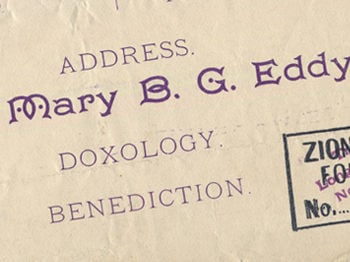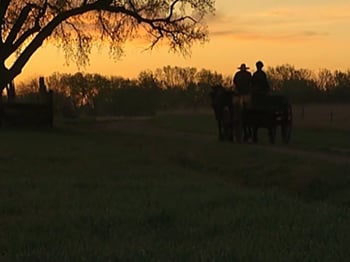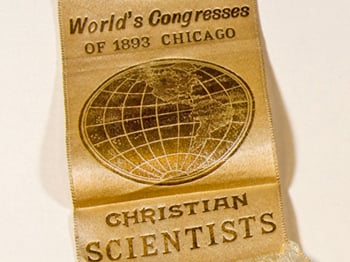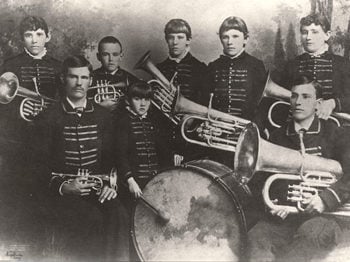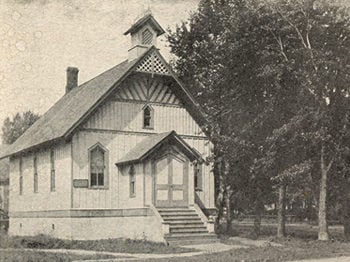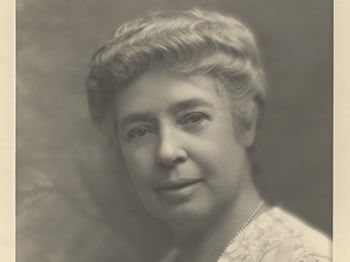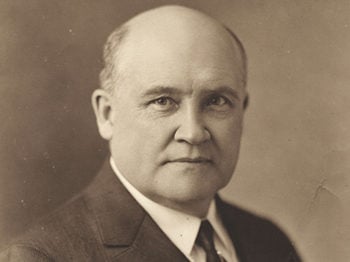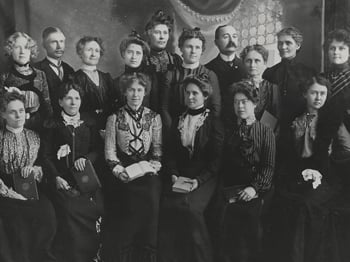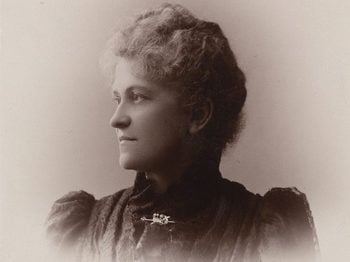“Isle of beauty, thou art singing/To my sense a sweet refrain…” With this inspired couplet, Mary Baker Eddy begins a poem in praise of a painting gifted to her as a thank you for Primary class instruction. The artist, Bradford Sherman, was a Chicago businessman who had been spreading the news about Christian Science ever since witnessing a Christian Science healing while on a trip to Boston in September 1882.1
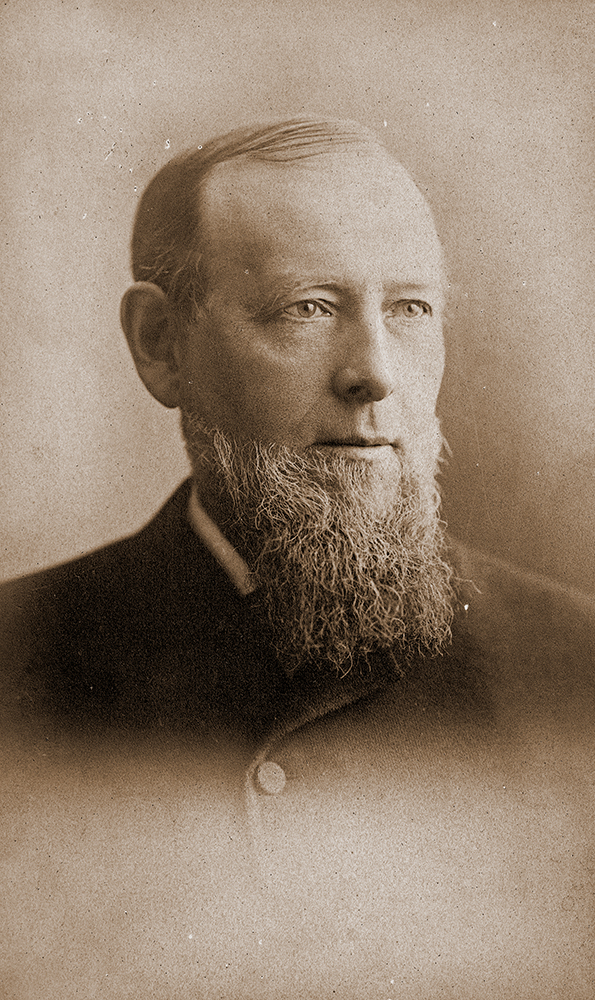
Heading back home to Chicago, Sherman brought with him several copies of the Christian Science textbook, Science and Health with Key to the Scriptures by Mary Baker Eddy. He and his wife, Martha, and son, Roger, immediately took up the study, and using what they were learning solely by reading the textbook, the three soon began healing others. Unable to meet the growing demand for their services, the Shermans reached out to their friend Caroline D. Noyes, who was also a Christian Scientist, asking her to leave Boston and join them in the healing work.2
As Christian Science spread in Chicago, it also began “running a little wild,” as biographer Robert Peel puts it, as well-meaning neophytes like the Shermans, Mrs. Noyes, and others combined what they understood of Mrs. Eddy’s system of healing with other mental techniques of the time.3 Eventually, it became clear that they needed correct teaching from the fountainhead: Mary Baker Eddy.
Bradford, Martha, and Roger Sherman, along with Caroline Noyes, were invited to enroll in Mrs. Eddy’s Primary class of February 1884 at the Massachusetts Metaphysical College in Boston. And just a few months later, in May 1884, Mrs. Eddy would travel to Chicago herself to meet the growing demand for clear, correct teaching.4
Sherman was so grateful for what he had learned from Mrs. Eddy’s instruction that he sent her a dramatic painting in thanks.5 Recently given to Longyear Museum by The First Church of Christ, Scientist, in Boston, Massachusetts, The Isle of Wight is an oil-on-canvas depiction of the famous cliffs and coastline of an island just off the English coast near Southampton.6
“Your picture is all finished,” Mrs. Sherman wrote to her teacher, adding that it would be sent soon by express, and that “everyone that has seen the picture calls it Mr. Sherman’s masterpiece. It is full of love to you from us all.”7
In his letter accompanying the painting two days later, Bradford Sherman reveals that Mrs. Eddy had seen the work in progress during her time in Chicago, and had offered “a few suggestions of [her] own…about the painting metaphysically,” notably the chalk cliffs “representing the crumbling away of material belief.”8
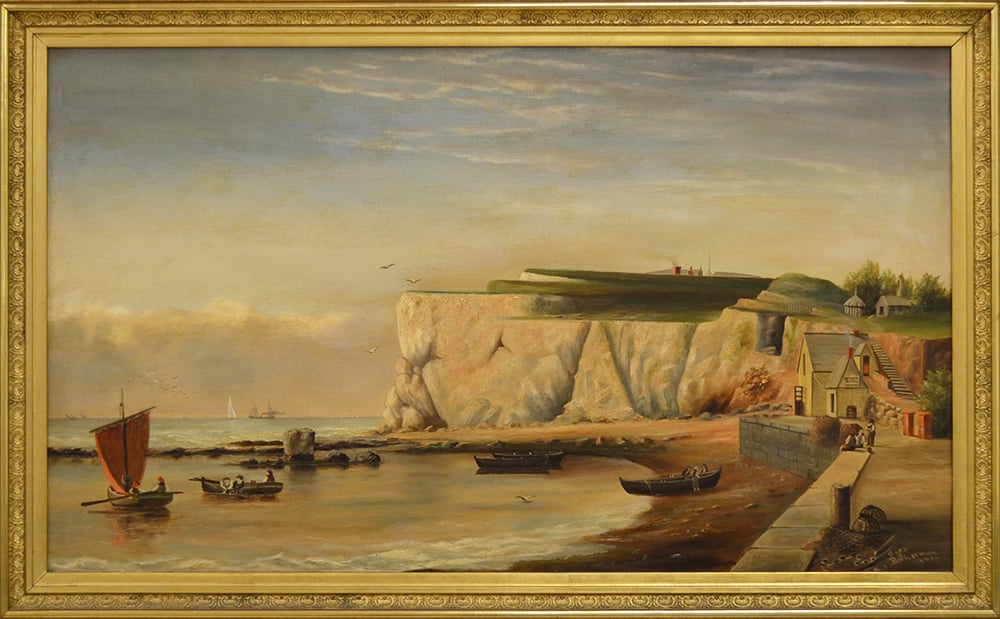
He goes on to elaborate on what he sees of the artwork’s spiritual signification. The twelve fishermen, he writes, “bring to mind the twelve chosen, twelve lessons, etc.,” while the bath house represents “purification, back of which are the ‘Foot-Steps of Truth’ leading to a higher plane.”
He concludes with a little humor, stating, “[t]he appliances on the wharf in the foreground, belonging to the toilers of the deep, I will leave to your solution not being much of a fisherman myself.”9
Mrs. Eddy was so moved by Sherman’s gift that she took up her pen and wrote a poem by the same name. “Isle of Wight” was published in The Christian Science Journal that August (1884), and would later be revised and included in Miscellaneous Writings 1883-1896 as well as Poems, the slim collection of verse that she published in 1910.10
| “Isle of Wight” The Christian Science Journal, August 1884 Isle of beauty, thou art singing Glows the charm of thy reflecting Work unseen ‘mid human debris Work ill done within the misty Students twelve he maketh e’en thus, Mind hath bathed this isthmus lordling Isle of beauty, thou art teaching |
“Isle of Wight” Miscellaneous Writings, 392 Isle of beauty, thou art singing Chief, the charm of thy reflecting, Soul, sublime ’mid human débris, Work ill-done within the misty Students wise, he maketh now thus Art hath bathed this isthmus-lordling Isle of beauty, thou art teaching |
It is evident from another letter written by Sherman several weeks later that Mrs. Eddy sent him a copy of the verses his painting inspired. Her poem “more than repays any feeble attempt of mine in any direction,” he assures her, adding “that you are pleased with the painting or that it gives you an occasional pleasant thought amidst your many cares and perplexities would give me abundant satisfaction.”11
The Shermans returned to Boston just a year after Mrs. Eddy’s visit to Chicago, when both Bradford and Roger attended the Normal class of February 1885, studying again with Mrs. Eddy at the Massachusetts Metaphysical College.12 Back in Chicago afterwards, all three Shermans continued their healing practices, now on a firm footing of proper instruction. Bradford Sherman also began teaching, with his first class assembling in Denver in December 1885.13
Mr. Sherman was listed in The Christian Science Journal as a practitioner and teacher until his passing in December 1917. He painted several pieces of artwork for Mrs. Eddy.14 In addition to The Isle of Wight, he also sent her Dismasted in 1888 and Winter Landscape in 1890. His great love for his Leader led him to send such gifts — for which Mrs. Eddy was profoundly grateful, describing Bradford Sherman as part of her “Advance Guard in the West,” thanks to his dedicated work for the Cause of Christian Science.15
